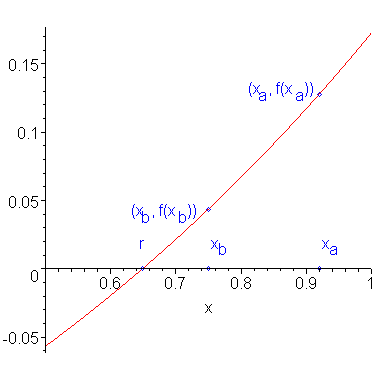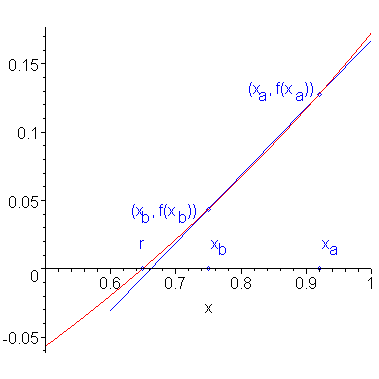Assumptions
If we do not have the derivative of the function, we must resort to interpolation when trying to find a root.
We will assume that f(x) is a real-valued function of a single variable x.
Derivation
Suppose we have two approximations xa and xb to a root r of f(x), that is, f(r) = 0. Figure 1 shows a function with a root and an approximation to that root.

Figure 1. A function f(x), a root r, and an approximation to that root xa.
Because f(x) is continuous, and in this case, differentiable, we could approximate the function by interpolating the two points (xa, f(xa)) and (xb, f(xb)). This interpolating line is shown in Figure 2.

Figure 1. The line tangent to the point (xa, f(xa)).
The formula for this line may be deduced quite easily: using Lagrange, the interpolating polynomial is:
Finding the root of this line is simply a matter of equating the above line to zero and solving for x:
Multiplying through by b - a, we get:
and solving for x, we get:
Thus, this value of x should be a better approximation of the root than either xa or xb.
Comment
You should recognize this as the same formula we used for the false-position method. Note, however, that an approximation of the derivative at xb is given by (f(xb) - f(xa))/(xb - xa), and therefore, with a little algebra, the above equation can be written as:
which is similar to Newton's, but using an approximation of the derivative, rather than the exact value of the derivative.
Copyright ©2005 by Douglas Wilhelm Harder. All rights reserved.


